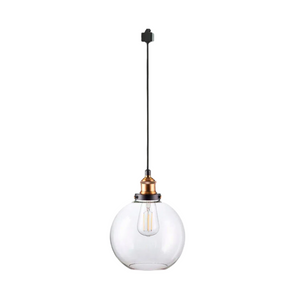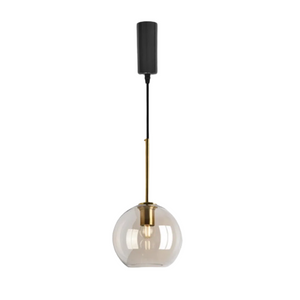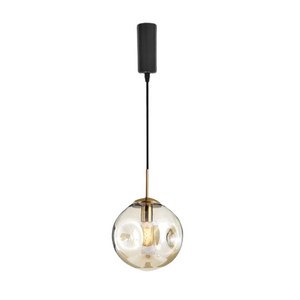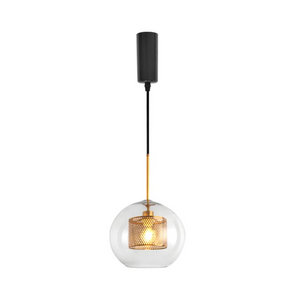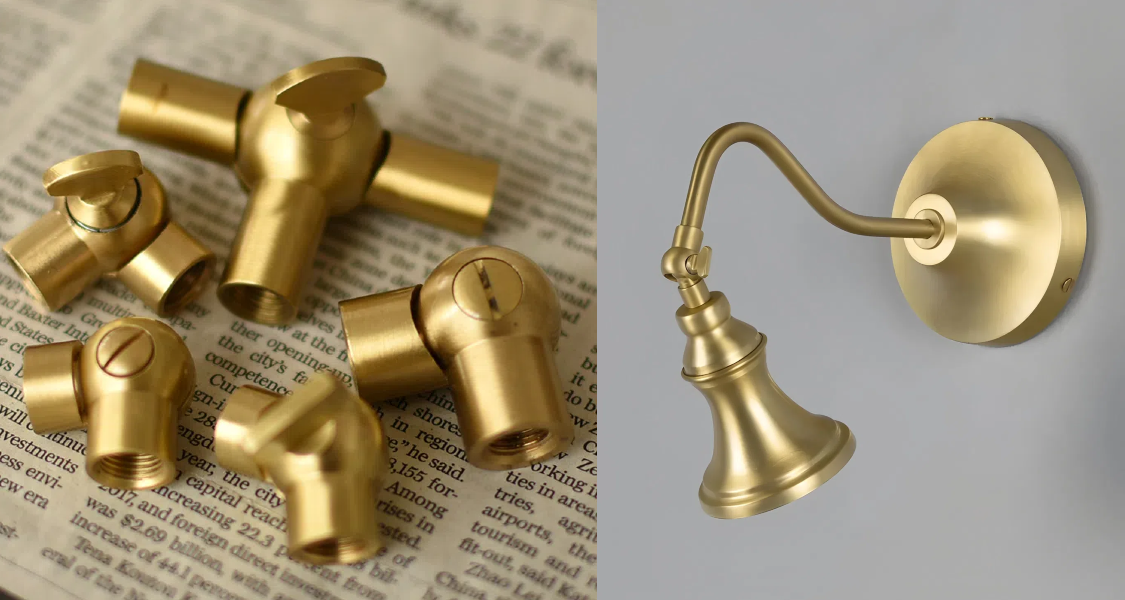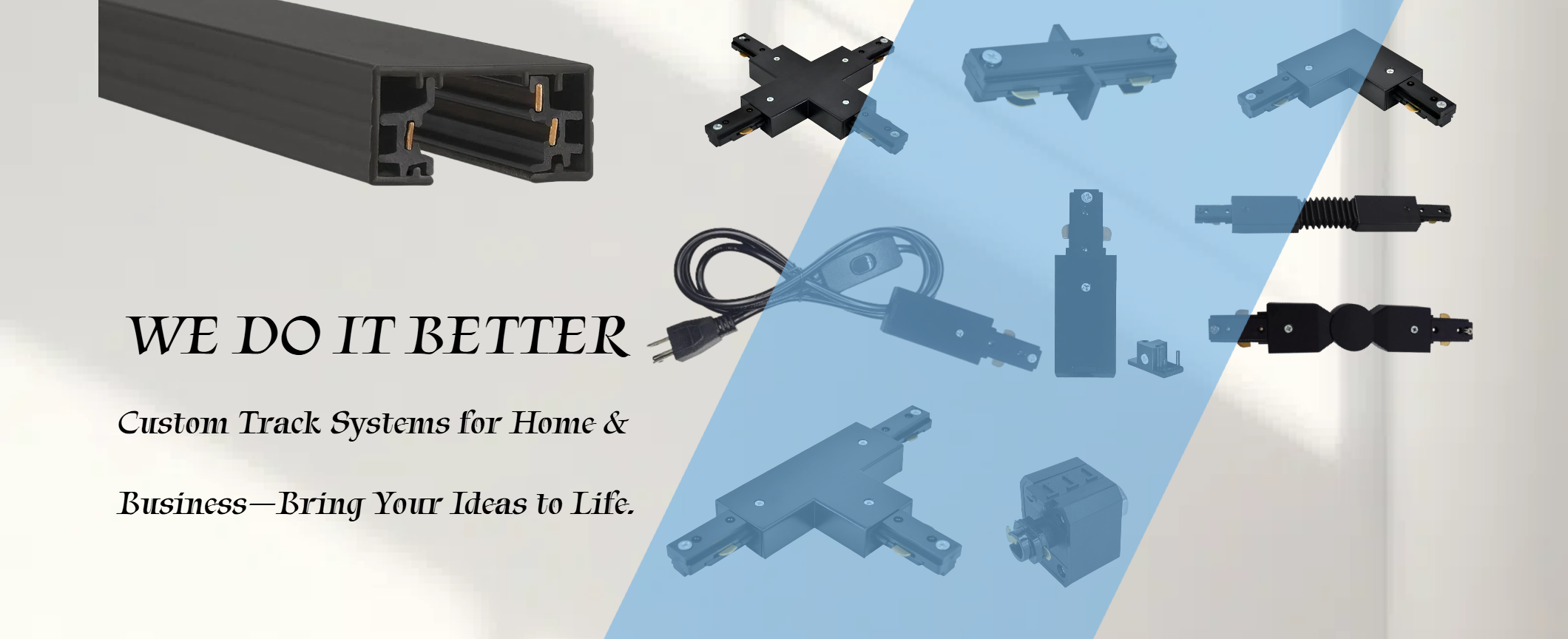Tired of dark corners and glare? This 2025 guide makes kitchen lighting easy with three layers—ambient, task, and accent. We’ll show where each one goes and how to size and control them, so your kitchen is bright, safe, and comfortable to use every day.
Ambient Lighting: Creating the Perfect Kitchen Atmosphere
Ambient lighting is your kitchen's main source of light—the basic illumination that makes your space comfortable and welcoming. It's different from the bright, focused lights you need for cooking tasks. Instead, ambient lighting provides gentle, even coverage throughout your entire kitchen so you can see clearly without harsh shadows or dark spots.It's what lets you walk into your kitchen at night and instantly feel at ease, whether you're grabbing a glass of water or chatting with family while dinner cooks.
Best Ambient Lighting Options for Your Kitchen
Here are the three most effective ways to add ambient lighting to your kitchen, each offering different benefits depending on your space and style preferences.
Recessed lighting placement and spacing
- Space lights using the ceiling height rule. Divide your ceiling height by two—so 8-foot ceilings need lights 4 feet apart, 9-foot ceilings need 4.5 feet between fixtures.
- Keep lights 18-24 inches away from upper cabinets. Position them in front of work areas instead of directly overhead to avoid casting shadows when you're cooking.
- Arrange lights in two parallel rows across your ceiling. This creates better coverage than putting all lights down the center of the room. Recessed lighting requires more planning upfront, but it gives you the cleanest look and most even coverage for everyday kitchen use.
Semi-flush mount ceiling fixtures (trending in 2025)

Semi-flush mounts are having a moment because they're more stylish than recessed lights while still working in regular-height kitchens. These fixtures hang 4-8 inches from your ceiling and come in trending styles like geometric shapes, mixed materials (wood with metal), and textured glass that creates cool ceiling patterns.
Cove lighting and indirect options
Cove lighting hides LED strips above cabinets or behind molding to create soft light that bounces off your ceiling. The easiest approach is placing LED strips on top of cabinets that don't reach the ceiling—this makes them look like they're floating and gives an elegant glow.
How to Calculate Ambient Lighting for Your Kitchen Size
Determining the right amount of ambient lighting ensures your kitchen feels comfortable without being too bright or too dim.
The Simple Formula:
Kitchen Square Footage ÷ 4 = Minimum Number of Recessed Lights Kitchen Square Footage ÷ 6 = Maximum Number of Recessed Lights
Example Calculation:
For a 12×15 foot kitchen (180 square feet):
- 180 ÷ 4 = 45 lights (maximum)
- 180 ÷ 6 = 30 lights (minimum)
- You need 30-45 recessed lights for proper ambient lighting
Kitchen Size Square Footage Recessed Lights Needed Spacing Guidelines Small 100 sq ft 17-25 lights 3-4 feet apart Medium 150 sq ft 25-38 lights 4 feet apart Large 200+ sq ft 33-50 lights 4-5 feet apart
Step-by-step calculation process:
- Measure your kitchen's length and width in feet. Multiply these numbers together to get your total square footage.
- Use the formula above to find your lighting range. Divide your square footage by 4 for the maximum lights needed, and by 6 for the minimum.
- Adjust for ceiling height using the spacing rule. Divide your ceiling height by 2 to determine spacing between lights (8-foot ceiling = 4 feet apart).
- Reduce the count if adding other ambient sources. Semi-flush mounts or cove lighting can replace 20-30% of your recessed lights.
- Consider your natural light situation. Kitchens with large windows or skylights can use 10-15% fewer fixtures than the formula suggests.
Task Lighting: Illuminate Your Kitchen Work Areas Like a Pro
Task lighting provides bright, focused light 2-3 times brighter than ambient lighting, positioned to eliminate shadows on work surfaces.
Under Cabinet Lighting: The #1 Kitchen Task Lighting Solution
Under cabinet lighting eliminates shadows created when your body blocks overhead lights during food preparation, providing direct illumination on work surfaces.
LED Strip vs. Puck Lights Comparison
| Feature | LED Strips | Puck Lights |
|---|---|---|
| Coverage | Continuous, even lighting | Individual pools with gaps |
| Cost | $15-30 per linear foot | $10-20 per fixture |
| Best for | Long countertops | Small sections |
| Appearance | Professional, seamless | Accent lighting |
| Lifespan | 15-20 years | 10-15 years |
Installation Guidelines
Position lights one-third back from cabinet front edge to minimize shadows. Run LED strips continuously across all work counters including sink, stove, and prep areas. Hide strips behind cabinet trim to prevent glare and create clean appearance.
Control Options
Install separate dimmers for independent control. Use bright settings for prep work, dim for ambient lighting. Smart controls allow preset scenes for different activities and smartphone/voice control.
Kitchen Island Pendant Lighting: Style Meets Function

Pendant lights provide focused task lighting while creating attractive focal points over islands.
Sizing and Spacing Formula
- Single pendant: Island width minus 12-20 inches
- Multiple pendants: Island length ÷ (pendants + 1) = spacing
- Pendant diameter: 8-15 inches for most islands
Height Guidelines
| Ceiling Height | Pendant Height | Floor Clearance |
|---|---|---|
| 8-9 feet | 30-36 inches above counter | 6 feet minimum |
| 10-12 feet | 36-40 inches above counter | 6 feet minimum |
| 12+ feet | Use longer pendants vs. hanging higher | 6 feet minimum |
2025 Trending Styles
Colorful pendants in deep blues, forest greens, and terracotta are replacing neutral-only designs. Sculptural shapes with organic curves are favored over geometric forms. Natural materials like rattan, rope, and wood combined with metal accents add warmth to modern kitchens.
Range Hood and Cooktop Lighting Solutions
Cooking areas need dedicated task lighting when range hoods provide insufficient illumination.
Lighting Solutions by Situation
- For inadequate hood lighting, install recessed lights slightly in front of the cooktop using heat-resistant trims and LED bulbs. Track lighting with adjustable heads works when recessed installation isn't possible.
- For ranges with upper cabinets, install heat-resistant LED strips underneath. Replace existing hood bulbs with bright LEDs rated for enclosed, high-temperature fixtures.
- For ranges without overhead hoods, consider high-hung pendant lights rated for kitchen use, ensuring adequate clearance while maintaining effective task lighting.
Installation Tips
- Position lights to avoid shadows during cooking
- Use heat and moisture-resistant fixtures
- Choose LED bulbs rated for temperature fluctuations
- Ensure proper clearance from heat sources This targeted approach ensures adequate illumination for all kitchen work activities while enhancing both safety and efficiency.
The flexibility of track lighting systems makes them particularly effective for kitchen prep areas, allowing you to direct focused light exactly where needed. Many homeowners find that properly installed track lighting eliminates shadows and makes food preparation significantly easier and safer. Learn more about maximizing your kitchen's functionality with strategic track lighting solutions.
Accent Lighting: Make Your Kitchen Look Amazing
Accent lighting adds the finishing touches to your kitchen design by highlighting your favorite features and creating visual interest. This lighting should be about 3 times brighter than your regular room lighting to properly showcase specific areas and turn your kitchen from a basic workspace into a space that looks professionally designed.
Cabinet Lighting That Makes a Real Difference
Cabinet lighting creates eye-catching displays while showing off your dishes and decorative items.
Lighting Inside Glass Cabinets
- Glass-front cabinets look much better with interior LED strip lights installed along the top inside edge.
- Small adjustable LED puck lights work well when you want to highlight specific items in your cabinets.
- Battery-powered LED lights are perfect for cabinets where you can't easily add wiring.
Under-Cabinet Floor Lighting
Putting LED strips in the space under your bottom cabinets makes them look like they're floating above the floor. This creates a modern look while making your kitchen appear bigger and more open. These lights also work well as gentle nighttime lighting when you don't want bright overhead lights.Use warm white LEDs (2700K-3000K) because they create a welcoming feeling. Cool white LEDs can make your kitchen feel cold and uninviting, which isn't what most people want.
Textured Glass Cabinet Doors (Popular in 2025)
Ribbed and fluted glass cabinet doors are very popular right now because they add texture while still letting you display your items. These textured surfaces work really well with interior cabinet lighting, creating interesting patterns that regular flat glass can't match.The vertical lines in ribbed glass spread LED light in a soft way, which reduces harsh shadows but still lets you see what's inside your cabinets. This gives you a more sophisticated look when displaying your dishes and decorative items while adding some privacy but keeping that open feeling.
Current Accent Lighting Ideas That Work
Today's accent lighting focuses on bold statement pieces and natural materials that add personality to your kitchen while actually being useful.
Statement Light Fixtures
- Large, interesting light fixtures work as both lighting and decoration, defining your kitchen space while showing your personal style. Big sculptural pendant lights over islands become conversation starters while giving you the light you need.
- Geometric chandeliers with several light sources create dramatic focal points in kitchens with higher ceilings. These fixtures give you the function of multiple pendant lights but with the visual impact of one impressive piece.
- Decorative wall lights next to windows or special architectural features add extra layers of light while working as design elements that match your kitchen's style.
Natural Material Light Fixtures
| Material | What It Does | Where It Works Best |
|---|---|---|
| Rattan/Woven | Adds warmth, balances hard surfaces | Pendant lights over islands |
| Wood/Bamboo | Adds texture, environmentally friendly | Statement fixtures |
| Stone-look | Adds luxury feel, matches stone counters | Accent lighting |
Warm Metal Finishes Are Back
Brushed gold and aged brass fixtures are replacing the cool chrome and stainless steel that were popular before. These warmer metal tones work well with both traditional and modern kitchen designs. You can now mix metals by combining gold accent lighting with stainless steel appliances without it looking wrong.Matte and brushed finishes work better than shiny metals because they look sophisticated but don't show fingerprints and water spots as much in busy kitchens.
How to Use Accent Lighting Right

- Add dimmer switches to your accent lights so you can change the mood throughout the day. Turn them up bright when you're entertaining to show off your kitchen's best features, then dim them down for everyday use.
- Match your accent lighting finishes with your cabinet handles and faucet to create a coordinated look.
- Place accent lights where they highlight your kitchen's best features while hiding less attractive things like electrical outlets or utility connections.
Kitchen Lighting Ideas by Kitchen Style and Size
Different kitchen sizes and styles need specific lighting approaches to maximize functionality and enhance design. The right strategy makes small kitchens feel larger while ensuring large spaces are well-lit throughout.
Small Kitchen Lighting That Makes Spaces Feel Bigger
Small kitchens need strategic lighting to create the illusion of more space while providing adequate work lighting.
Space-Expanding Techniques
- Use recessed lighting instead of hanging fixtures that visually clutter the ceiling
- Install under-cabinet LED strips on all counters to eliminate shadows and make surfaces appear longer
- Choose light-colored fixtures that blend with walls and ceiling rather than dark, contrasting colors
- Add toe-kick lighting under base cabinets to make them appear floating
- Use interior cabinet lighting in glass-front cabinets to create depth
Small Kitchen Fixture Guidelines
| Space Type | Best Fixtures | Avoid |
|---|---|---|
| Galley kitchens | Single row of recessed lights | Multiple pendants |
| Narrow kitchens | Slim under-cabinet strips | Bulky hanging fixtures |
| Low ceilings | Flush-mount ceiling lights | Semi-flush or pendants |
| Small islands | One small pendant or recessed lights | Multiple large pendants |
Position recessed lights in a single line down narrow kitchens, spaced 3-4 feet apart. Install under-cabinet lighting on both sides of galley layouts. Choose fixtures that don't extend below cabinet bottoms to maintain clean lines.
Large Kitchen and Open Concept Lighting Strategies
Large kitchens need comprehensive lighting to illuminate all areas effectively while creating distinct zones for different activities.
Zone-Based Design
Divide large kitchens into functional zones: cooking, prep, cleanup, and dining areas. Each zone needs tailored lighting—pendant lights over islands, recessed lights in cooking areas, and statement fixtures over dining spaces.
Multi-Level Lighting Approach
- Ceiling level: Recessed lights for general ambient lighting
- Task height: Pendants and under-cabinet strips for work surfaces
- Accent level: Cabinet lighting and wall sconces for decoration
Large Island Lighting
Islands 8+ feet long need three or more pendant lights spaced 24-30 inches apart. Calculate spacing: island length ÷ (pendants + 1). Use substantial fixtures that match the island's scale—small pendants look lost over large islands.
Open Concept Coordination
Coordinate kitchen lighting with adjacent living spaces using similar fixture finishes and consistent color temperatures. Position lighting to avoid glare in seating areas and use dimmers to adjust brightness for entertaining.
Managing Large Space Challenges
Large kitchens often need 15-25 recessed lights for proper coverage. Add supplemental lighting in areas far from main fixtures to prevent dark corners. Use multiple circuits so you can illuminate only areas you're using.Quick Guide
| Kitchen Style | Best Fixtures | Key Features |
|---|---|---|
| Modern | Recessed lights, geometric pendants, LED strips | Clean lines, consistent spacing |
| Traditional | Decorative fixtures, layered lighting | Crystal elements, fabric shades, ornate details |
| Farmhouse | Natural material fixtures | Wood, wrought iron, vintage-inspired designs |
Kitchen Lighting Design: Frequently Asked Questions
Q1: How many pendant lights do I need over my kitchen island?
Use 2 pendant lights for islands up to 6 feet long, and 3 pendant lights for islands 7-8 feet long. For islands longer than 8 feet, use 3-4 pendants or one long linear fixture. Space the pendants 24-30 inches apart and hang them 30-36 inches above the countertop.
Q2: What's the best color temperature for kitchen lighting?
Use 2700K-3000K (warm white) for most kitchens. This creates a comfortable, welcoming feeling that works well for cooking and dining. If you want a more modern look, use 3500K (neutral white). Avoid mixing different color temperatures in the same kitchen.
Q3: How bright should kitchen lighting be?
General room lighting needs 50-100 lumens per square foot. Work areas like countertops need 300-500 lumens per linear foot. A 100 square foot kitchen needs about 5,000-10,000 total lumens from all light sources combined.
Q4: What's the difference between warm white and cool white for kitchens?
Warm white (2700K-3000K) has a yellow tone like old incandescent bulbs and feels cozy. Cool white (4000K-5000K) has a blue tone and feels bright but can seem cold. Most people prefer warm white in kitchens because it feels more comfortable.
Q5: How far apart should recessed lights be in a kitchen?
Divide your ceiling height by 2 to get the spacing. For 8-foot ceilings, space lights 4 feet apart. For 9-foot ceilings, space them 4.5 feet apart. Keep lights 18-24 inches away from cabinets.
Q6: Do I need under cabinet lighting if I have pendant lights?
Yes. Pendant lights only work over islands and dining areas. You still need under cabinet lighting for countertops along walls because overhead lights create shadows when you're working.
Q7: What are the most popular kitchen lighting trends for 2025?
Colorful pendant lights (especially blue and green), gold and brass finishes instead of chrome, natural materials like wood and rattan, and textured glass cabinet doors with interior lighting are trending. Smart lighting controls are also becoming standard.
Q8: How much does professional kitchen lighting design cost?
Design consultation costs $500-2,000. Complete installation ranges from $2,000-8,000 depending on your kitchen size. Individual costs: recessed lights $100-200 each installed, pendant lights $150-500 each installed, under cabinet LED strips $15-30 per foot installed.
Create Your Perfect Kitchen Lighting Design Today
Start with essential under-cabinet lighting and recessed ceiling lights, then add pendant lights over islands and accent lighting to showcase your favorite features. Don't make the mistake of using only one central light—your kitchen needs multiple sources to eliminate shadows and create the right mood. Consider hiring a professional if your project involves complex electrical work or you want guaranteed results.
